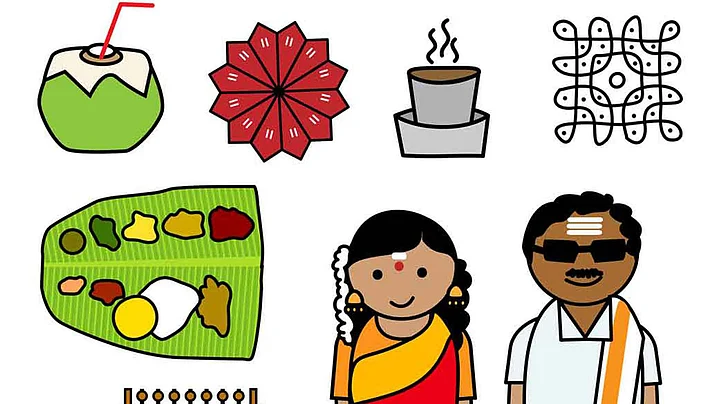When Charles de Gaulle complained about the difficulty of governing a country that had 246 different kinds of cheese, he was probably completely unaware about India, a country where food changes its taste, type, treatment almost every second mile.
With more than 4,600 communities, food is the last thing that can be ‘nationalised’ in India. But are our cuisines still dominated by deplorable caste practices? What role does caste play in the way we celebrate culinary delights in India?
A picture of ‘Brahmin Sambar powder’ went viral on the internet a while ago, drawing social media flak against Eastern Condiments – the grocery chain from Kerala. The fury was directed at the mindset of selling ‘onion-garlic free’, ‘high-quality’ Sambar powder in the name of ‘Brahmins’.
What social media fails to understand is that caste is ingrained in our taste buds and eating habits. Food snobbery is a part of India and the food that belongs to upper castes has always been more celebrated. In a caste-sensitive India, labelling your product as Brahmin (one) is a way to communicate that it boasts of the highest form of purity.Pushpesh Pant, Food Historian & Researcher
The Brahmin Coffee Shops – Vaishno Bhojanalayas
From South Indian food outlets and cafes to cater to Brahminical taste buds, to caste-based cookery books and grocery chains – the history of food in India has been dominated by caste.
Vijee Krishnan an Iyengar Brahmin and co-author of Why Onions Cry: Peek into an Iyengar Kitchen, landed into a peculiar situation when she could not prepare the food eaten by her husband’s family – the Iyengar Brahmins of Tamil Nadu – because she had spent most of her life in Delhi.
Everyone assumed I could put out a traditional Iyengar spread of a dozen vegetables, rice, pickles and condiments. I knew how to cook Brahmin food but not the nuances of Iyengar Brahmin cuisine. I had to learn fast from my mother-in-law and her mother.Vijee Krishnan, in an interview published about her book
The book and its recipes offer an understanding of a ‘Brahmin’ kitchen and why an array of vegetables and cooking practices are a complete no-no for Brahmins.
The tradition of ‘community cookbooks’ goes back several decades. Collections of recipes, meant to be privately published and circulated within Anglo-Indians, Iyer Brahmins, Syrian Christians, Ismaili Muslims, Parsis, Jains, Saraswat Brahmins, the Chettinads and the Lingayats, were ‘bibles’ for new brides.
Beef Eating as the Root of Untouchability
The influence of caste on your plate, is not to be confused with distinct taste buds and diverse eating habits. It’s about food snobbery and imposing cultural hierarchy through food.
Untouchability in India emerged as a practice to ban the consumption of beef. Upper caste Hindus and Brahmins ‘out-casted’ those who ate beef. This alienated both the lower-caste Hindus and rival religions like Islam and Christianity in the name of ‘purity’ of food. In reality, Dalits acquired their distinct culinary practices, adjusting to poverty and dehumanisation. Their protein intake came from the cheapest forms of meat i.e. pigs, beef and offal. Upper-caste Hindus refrained from consuming meat because they could afford the best of vegetables and dairy products.
The Rat Eaters, the Ant Lovers
In 1980s the popular Doordarshan show Surabhi brought a recipe of the ‘outcast’ on national television. The ‘Red Ant Chatni’ explained and relished by anchor Siddharth Kak became an ‘exotic dish’ in television history.
Decades later, among the plethora of cookery shows and cook books, you’re unlikely to find any mention of Dalit recipes or books that may offer an insight into a ‘lower-caste’ kitchen in India.
Dalit Kitchens and Recipes
In 2013, a study on Dalit movement and gender took a group of students from the Women’s Studies Centre at Pune University into Dalit kitchens.
While speaking to Dalit women and activists we realised that a lot of their memories revolved around food. Despite this, Dalit cooking practices were never considered worthy of study, nor were they documented in the form of a cook book. We decided to bring out the connection of food with caste, and preserve the food practices and recipes at Dalit houses.Deepa Tak, Researcher Women’s Studies Centre, Pune University
The project expanded its scope to establish culinary inclusiveness. ‘Isn’t This Plate Indian? Dalit Histories and Memories of Food’ is now the most authentic account of what Dalits ate and their cooking practices in India.
What Dalits ate was always the food of poverty. They never felt that their food should be celebrated. What they ate was not the food prepared in abundance, but recipes that originated in the lack of ingredients and poverty in the kitchen.Pushpesh Pant, Food Historian & Researcher
You Are What You Eat!
In June this year, Chandrabhan Prasad adviser to the Dalit Indian Chamber of Commerce and Industry, launched Dalit Foods a food business portal. It is a revolutionary idea in every sense. Dalits have found it extremely difficult to venture into food and food-processing industries, because people are still conscious of consuming food or food items prepared by Dalits.
In India, what you eat decides your social status, your economic worth, whom you marry and where you live. A vegetarian, by default, is considered clean, calm and pure vis-à-vis a non-vegetarian who, according to popular perception, is violent and filthy.
We live in a country where our food can allow us to hold our heads high or let it hang in shame – the ongoing beef ban discussions and the following protests are an evidence to this.
(At The Quint, we question everything. Play an active role in shaping our journalism by becoming a member today.)
